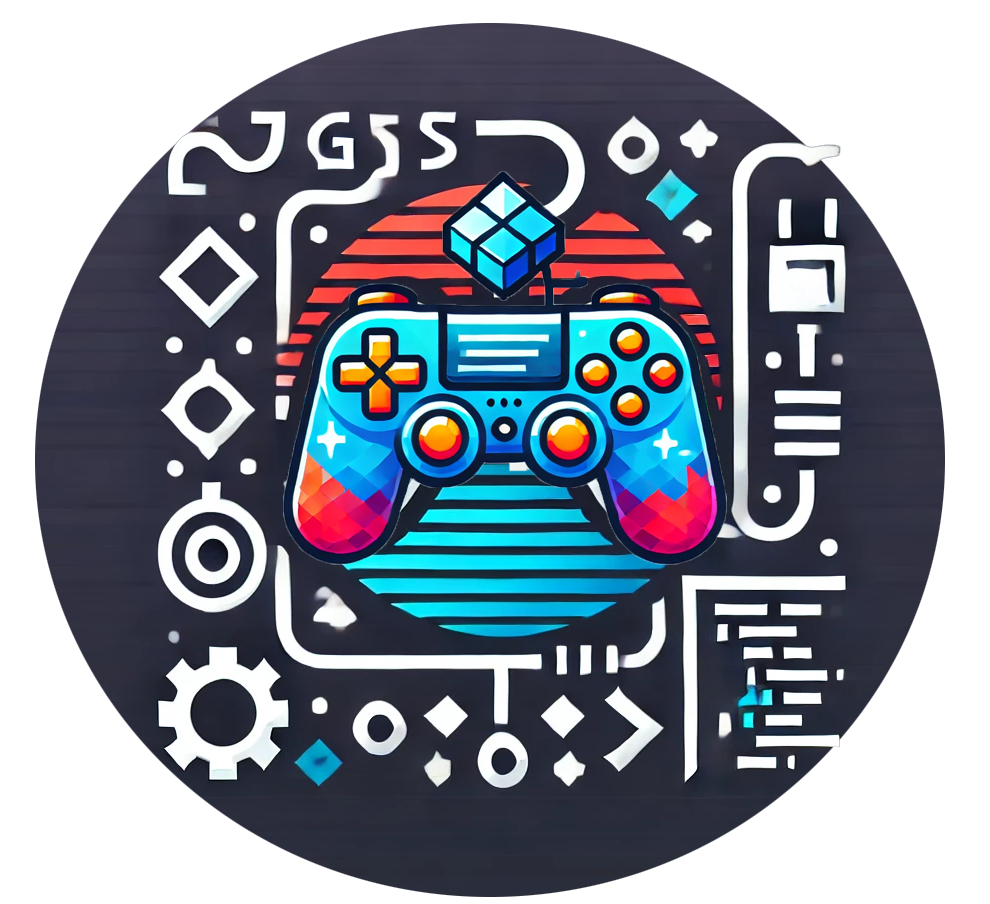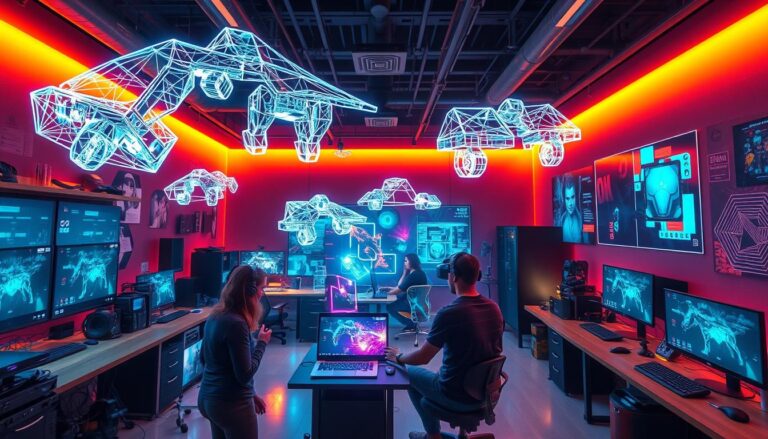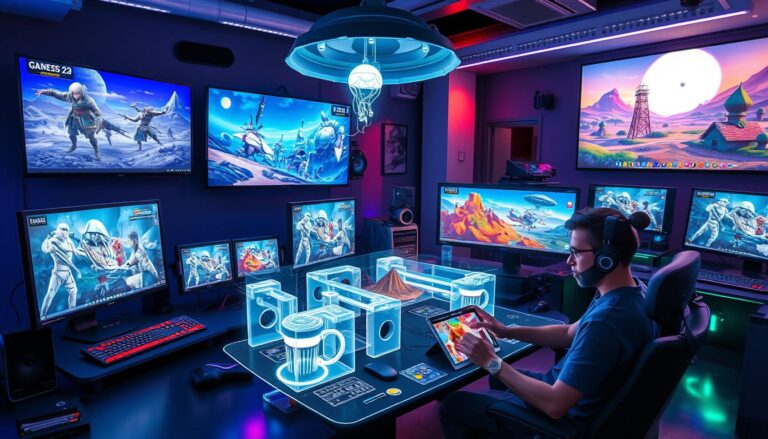How Can Lighting and Shadow Be Used for Puzzle Mechanics in 3D Games?
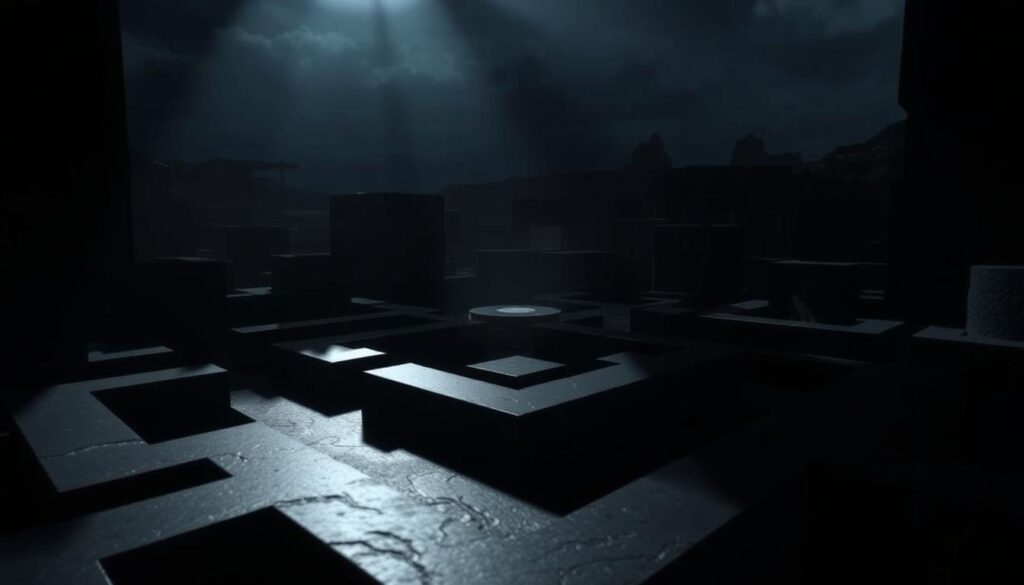
Game developers are changing how we play games with advanced lighting and shadow techniques. These elements turn simple graphics into complex, immersive worlds. They challenge our perception and problem-solving skills.
Today, lighting and shadows are more than just looks. They are key parts of the game that can make puzzles, affect emotions, and offer unique challenges. This makes games more interactive and engaging.
Now, lighting can be a smart part of the game. Developers create puzzles where light and shadow are essential. Players must use them to solve the game.
Game programming has become so advanced that shadows can move, reflect light, and even talk to players. This opens up new ways to design puzzles. Players use their eyes and brains to figure out the game.
With advanced lighting, game designers can make games that test our perception and encourage creative thinking. These games offer deep, interactive stories that keep players hooked.
Understanding Core Light and Shadow Mechanics in Game Design
Light and shadow are key in virtual reality game design. They turn digital scenes into living, breathing worlds. Game designers use advanced methods to make visuals pop and improve gameplay.
Today’s unity game development uses top-notch lighting systems. These systems mimic real-world light and shadow. They help create detailed, interactive scenes that draw players in.
Basic Principles of Light Behavior in Virtual Environments
To grasp light behavior, we need to know a few basics:
- Reflection: How light bounces off surfaces
- Refraction: Light bending through different materials
- Diffusion: Light scattering across surfaces
Shadow Generation and Real-time Rendering
Creating realistic shadows is a complex task. It involves quick calculations of light and shadow. Developers must find a balance between looks and speed for smooth gameplay.
| Rendering Technique | Performance Impact | Visual Quality |
|---|---|---|
| Static Shadows | Low | Basic |
| Dynamic Shadows | High | Advanced |
| Ray-traced Shadows | Very High | Photorealistic |
Physics-Based Lighting Systems
Physics-based lighting uses realistic illumination models. These models simulate light and shadow with great accuracy. They take into account material, light, and environment to create stunning visuals.
Fundamental Puzzle Types Using Light and Shadow
Light and shadow puzzles are a new area in mobile game development. They make players think creatively about space and solving visual problems. These puzzles are becoming more popular, changing how we play games.
Game designers have come up with several main puzzle types that use light and shadow:
- Shadow Casting Puzzles: Players move objects to make specific shadow shapes or patterns
- Light Beam Redirection: Gamers change the path of light to turn on switches or show hidden paths
- Silhouette Matching: Players must make exact shadow outlines using different objects
Games like “The Witness” and “Contrast” have shown new ways to design puzzles with light. They show how complex shadow mechanics can make games more fun and engaging.
| Puzzle Type | Core Mechanic | Complexity Level |
|---|---|---|
| Shadow Casting | Object Positioning | Beginner |
| Light Beam Manipulation | Source Redirection | Intermediate |
| Silhouette Puzzles | Precise Object Arrangement | Advanced |
By adding these complex puzzle mechanics, game developers are making games more exciting. Using light and shadow not only makes games look great but also tests players’ minds in new ways.
3D Game Development: Implementing Light-Based Puzzle Systems
Developers must grasp the complex steps to add light-based puzzles in 3D games. They need to focus on making the game run smoothly and look great.
Creating puzzles that use light well requires smart planning. It’s about finding the right balance between how it looks and how it runs.
Unity Engine Light Implementation
Unity has great tools for making puzzle games shine with light. Here are some key tips:
- Use real-time global illumination
- Apply shadow rendering techniques
- Set up light probes for a more realistic look
Unreal Engine Shadow Mechanics
Unreal Engine has top-notch tools for creating shadows in puzzles. Here’s how to use them:
- Try advanced shadow cascading systems
- Use volumetric lighting for depth
- Play with interactive shadows
Performance Optimization Techniques
Keeping the game running smoothly is key. Developers should manage resources well.
| Optimization Strategy | Performance Impact |
|---|---|
| Light Culling | Reduces rendering overhead |
| Shadow Map Resolution | Balances visual quality and performance |
| Baked Lighting | Minimizes real-time computational load |
By using these tools and understanding how to optimize, developers can make engaging puzzles. These puzzles will keep players interested without slowing down the game.
Creating Interactive Light Beam Puzzles
Interactive light beam puzzles are a smart way to test players’ skills in game programming. They push players to think about space and solve problems. By using augmented reality, game makers turn light tricks into fun game elements.
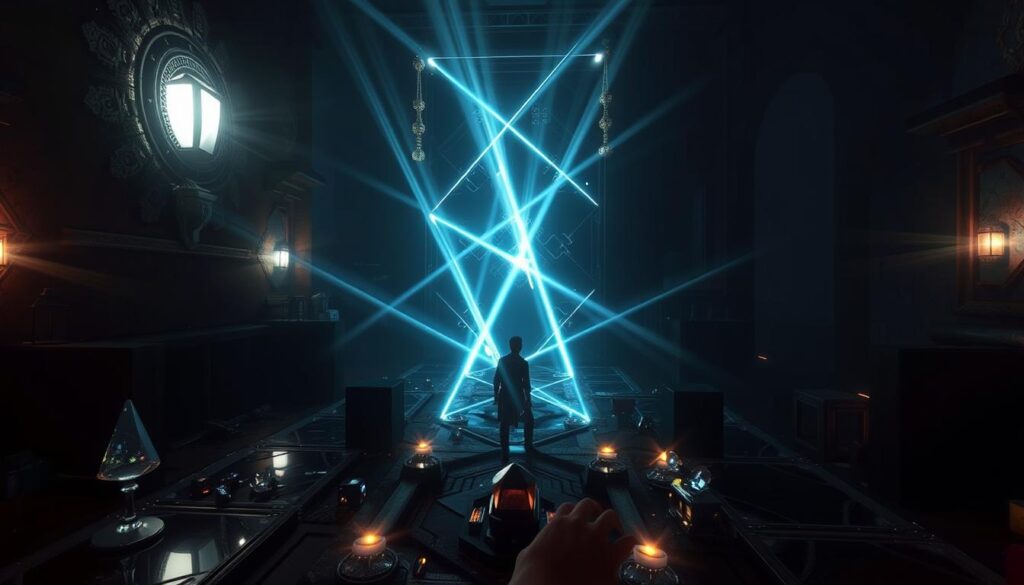
To make light beam puzzles, developers need to think carefully about how players will interact with them. They use different strategies:
- Use reflective surfaces to redirect light beams
- Incorporate prisms and lenses for complex light refractions
- Create switches activated by precise light positioning
- Design multi-stage puzzles requiring sequential light redirections
The main challenge is making light beam actions feel real. Players must use mirrors, adjust angles, and grasp light physics. Augmented reality games make these actions fun and easy to understand.
Creating great light beam puzzles is all about finding the right balance. Developers need to make things clear, easy to understand, and gradually harder. This keeps players interested and avoids getting stuck.
Environmental Shadow Manipulation Mechanics
Shadow manipulation is a new frontier in virtual reality game development. Game designers use advanced shadow mechanics to make games more immersive and interactive. These mechanics challenge players’ perception and problem-solving skills.
Today’s gaming trends show new ways to use shadow mechanics in games. Developers turn shadows from just visuals into interactive tools. This changes how players interact with games.
Dynamic Shadow Casting Techniques
Dynamic shadow casting adds complex puzzles by making shadows react in real-time. Players can:
- Manipulate light sources to create strategic shadow patterns
- Use shadows as protective cover in stealth scenarios
- Solve environmental puzzles through precise shadow positioning
Player-Controlled Shadow Elements
New game design ideas let players interact with shadows directly. Innovative mechanics allow gamers to:
- Generate and redirect shadows
- Use shadows as platforms or barriers
- Transform game environments through shadow manipulation
Time-of-Day Shadow Systems
Advanced shadow systems include dynamic lighting that changes throughout the game world. These systems offer rich storytelling and gameplay opportunities. Shadows become key to both the story and gameplay.
Color-Based Light Puzzles and Solutions
Game design tools have changed how developers make puzzles in 3D games. Color-based light puzzles use color and light to make games more engaging. They tap into the psychological effects of color and light.

Unity game development has powerful ways to make color-based lighting puzzles. Designers can create complex challenges that change how players see things. They use color in a strategic way:
- Selective Color Visibility: Hide or reveal game elements based on specific light colors
- Color Mixing Mechanics: Combine different light sources to unlock new pathways
- Emotional Color Cues: Use color psychology to guide player emotions and problem-solving
These puzzles are built on key design principles. Chromatic interaction is a main gameplay mechanic. Players must know how different light colors work with the game world.
- Color-coded object interactions
- Light-based transformation mechanics
- Spectral filtering challenges
It’s important to make puzzles accessible to everyone. Developers should think about players with color vision problems. They need to make sure puzzles are clear and can be solved in different ways.
Optimizing Performance for Light-Based Game Mechanics
Creating mobile games with complex lighting and shadows is tough. Developers must find a balance between looks and speed. This ensures games work well on all devices.
Optimizing game engines is key for light-based puzzles on mobiles. Developers must use smart ways to handle computer power.
Resource Management Strategies
Good resource management boosts game speed. Important steps include:
- Using simple shader techniques
- Compressing textures
- Limiting dynamic lights
- Applying occlusion culling
Frame Rate Optimization
Keeping gameplay smooth is vital. Developers can do this by:
- Lowering polygon counts in scenes
- Using level-of-detail (LOD) rendering
- Grouping light calculations
- Calculating static lighting ahead of time
Mobile Platform Considerations
Mobile game making needs special tweaks. Baked lighting works better on phones than real-time lighting. It’s important to test games on different devices for the best look and speed.
By balancing visual details with computer power, developers can make engaging light-based puzzles. These games will run smoothly on mobiles.
Conclusion
3D Game Development keeps getting better, with lighting and shadow getting more complex. Game designers now see these as key for making games feel real. The mix of light and shadow turns puzzles into deep stories.
There’s a big shift in the gaming world towards new visual designs. Developers who get good at light and shadow can make games that test players’ minds. These games use new tech to let designers be really creative.
New tech is changing virtual worlds in big ways. Things like real-time lighting and advanced shadows are now must-haves in games. Studios that learn and use these will shine in the digital world.
Game designers should see light and shadow as more than just visuals. They’re powerful tools for telling stories and making games fun. By playing with these, developers can make games that really stick with players. The future of games is all about how light and shadow can change the way we play.
